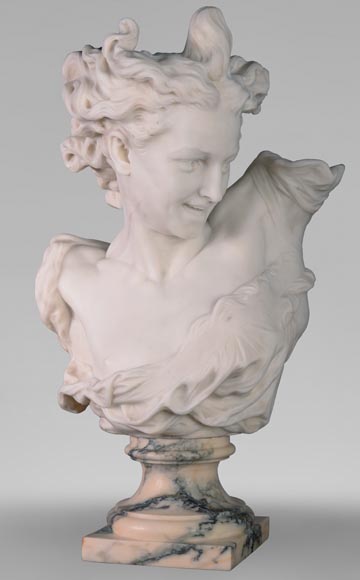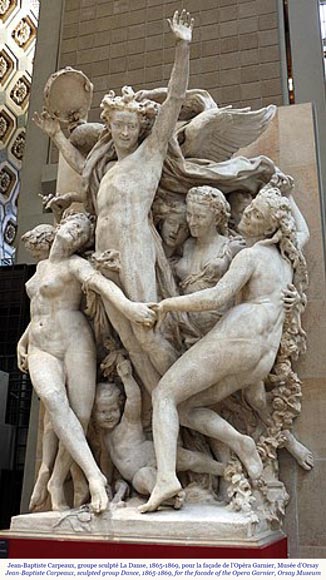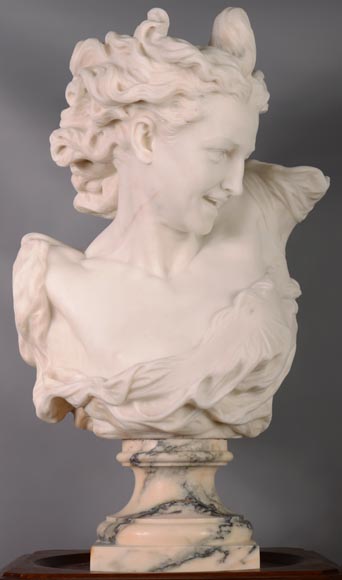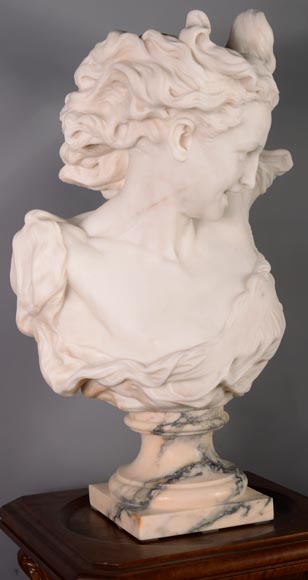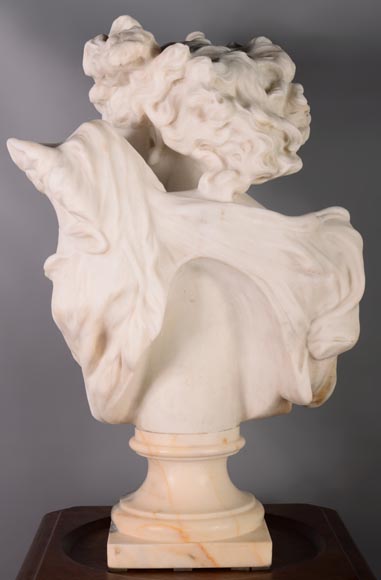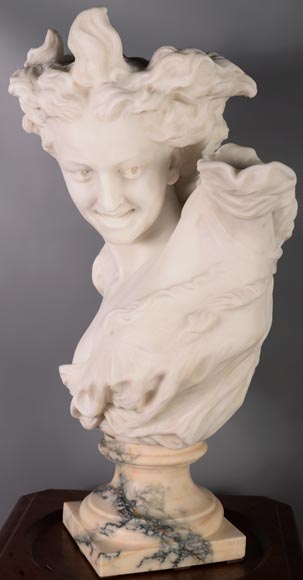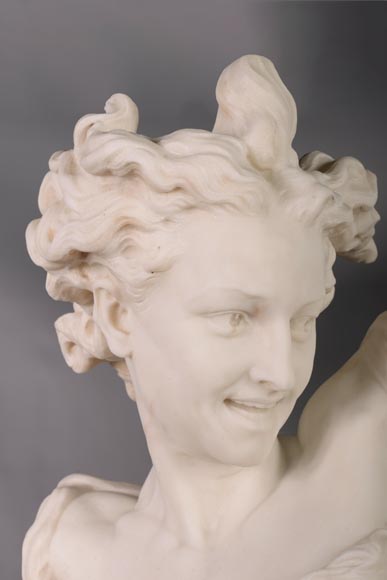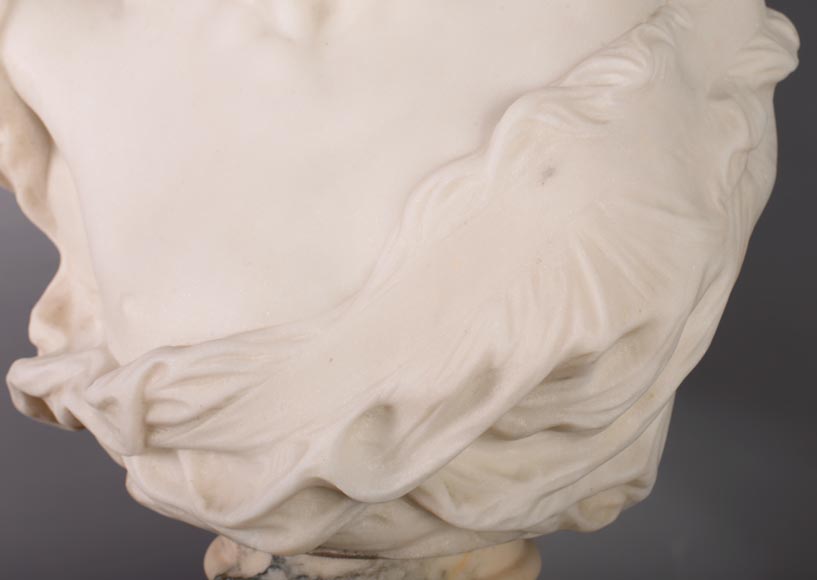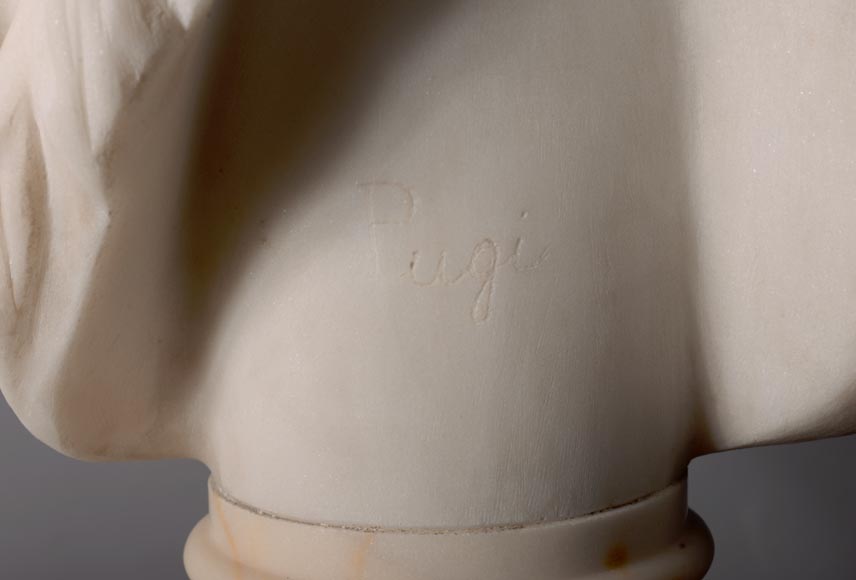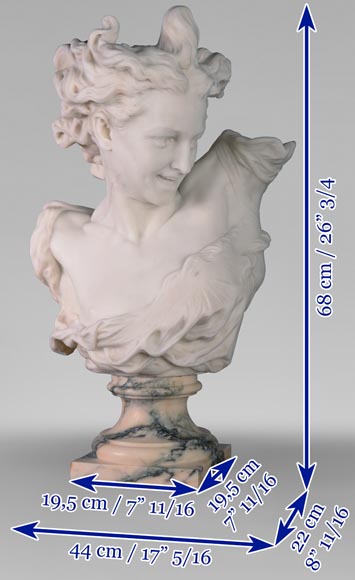Style Other / Ref.12758
Guglielmo PUGI (1850 - 1915), White Carrara marble bust From the sculpture of Jean-Baptiste CARPEAUX « Dance », Circa 1900
Dimensions
Width 17'' ⅜ 44cm
Height 26'' ¾ 68cm
Depth: 8'' ⅝ 22cm
Origin:
19th century.
Our Carrara marble bust is signed by the Italian sculptor Guglielmo Pugi (1850 – 1915) who has made it around 1900. It uses the model of the sculpted group realized between 1863 and 1869 by the French sculptor Jean-Baptiste Carpeaux (1827 - 1875), untitled « Dance », for the opera Garnier in Paris.
The order of this group is due to Charles Garnier (1825 – 1898), architect of the opera in Paris that now bears his name. In 1863, he asks four artists who have won the Prix de Rome, to realize sculpted groups that will decorate the facade of the opera according to the following themes: Dance, Poetry, Music and Lyrical drama. Jean-Baptiste Carpeaux was in charge of creating the Dance one. At the end of three years during which he made draws and models to give the best move impression, Jean-Baptiste Carpeaux sculpted this group, the original one is kept in the Musée d'Orsay in Paris and a copy is now on the opera's facade. This farandole of naked women that surrounds the incarnation of the Dance's spirit shocked the public opinion. Indeed, they judge the group as improper because of the realism of the feminine nudes. It's only the war of 1870 and the death of the sculptor, five years after, that stops the polemic.
For the creation of our bust put on a Paonazzo marble pedestal, Guglielmo Pugi chose to be inspired by the face of the Dance's spirit that he reproduces in an identical way. Indeed, the smiling face is slightly bend toward the bottom, and the glance is turned to the left, the disheveled hair seem to be blown by the wind and the position of the shoulders indicates a move toward the sky. The only difference from the model of the French sculptor is that Pugi chose to dress the Dance's spirit with a fabric that covers his chest.
Guglielmo Pugi owned a workshop in Firenze where he sculpted with his two sons Gino and Fiorenzo. His sculptures, directly chiseled in the alabaster or the Carrara marble, were above all made for the United States. Many of them were presented during the American Exhibition of Buffalo in 1901 and the International Exhibition of Saint-Louis in 1904. We owe him many Art Nouveau sculptures but also portraits kept in the historical Museum of Alabaster in Volterra, Italy, or even the bust of the king Humbert Ist on the place in Fiesole. When he died, his two sons kept going the workshop by changing the name «Guglielmo i figli » (and sons) to « Fratelli G. e F. Pugi » (Brothers G. and F. Pugi) as the signature for « Flli Pugi ».
Informations
Price: on request
Recommended for you :
Dimensions:
Width: 47
Height: 23
Depth: 26
Dimensions:
Width: 77
Height: 58
Depth: 36
Dimensions:
Width: 29
Height: 68
Depth: 22
Dimensions:
Width: 42
Height: 203
Depth: 45
Diameter: 27
Dimensions:
Width: 35
Height: 73
Depth: 8
Dimensions:
Height: 78
Diameter: 68
Dimensions:
Width: 39
Height: 80
Depth: 26
Dimensions:
Width: 35
Height: 111
Depth: 43
Dimensions:
Width: 44
Height: 110
Depth: 33
Diameter: 33
Dimensions:
Width: 34
Height: 67
Depth: 34
Dimensions:
Height: 84
Diameter: 30



